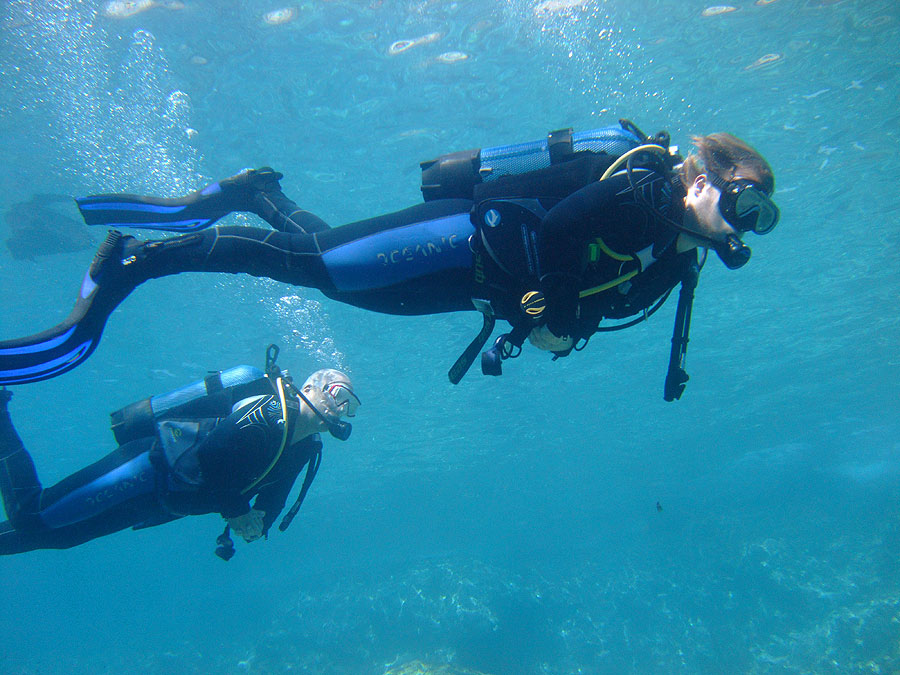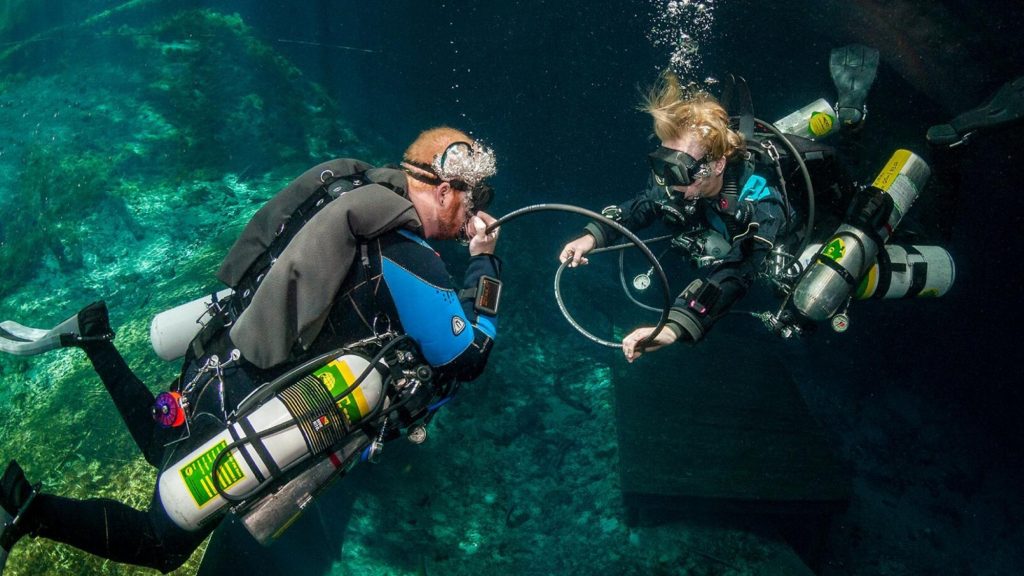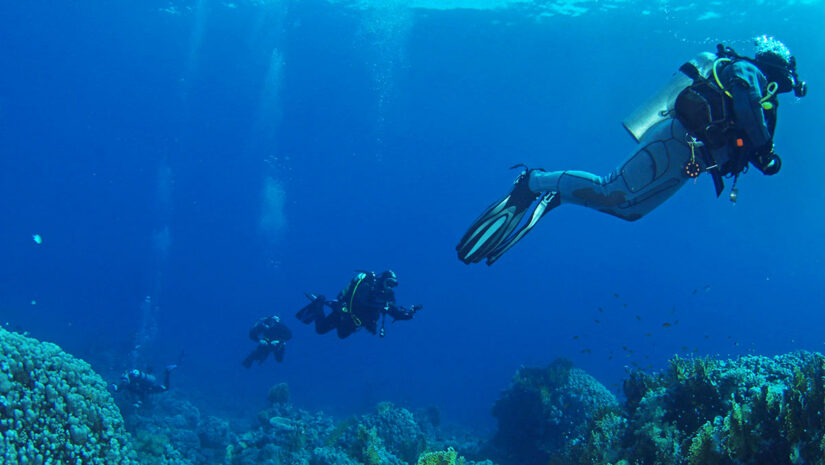An underwater scooter enhances your dive by extending dive time up to 30% with less effort, allowing you to cover 3x more distance effortlessly. It improves buoyancy control, reduces air consumption, and lets you explore reefs or wrecks without fatigue. Hands-free operation enables photography or tool use, while speeds of 2-4 km/h add excitement. Ideal for beginners and pros alike! (60 words)
Saves Energy, Extends Dive
Most divers burn 30-50% more energy fighting currents or covering distance, but a scooter cuts that effort drastically. Tests show divers using scooters reduce their oxygen consumption by 20-25%, meaning a standard 60-minute dive can stretch to 75+ minutes without changing tank size. That’s an extra 15 minutes of bottom time, which translates to more wildlife encounters, better photos, and less fatigue.
The physics is simple: scooters like the Seabob F5 or Dive Xtras Cuda propel you at 2-4 km/h with minimal kicking. For context, an average diver swims at 1-1.5 km/h—so you’re doubling speed while expending half the energy. Even in mild currents, a scooter’s 250-500W motor (equivalent to a high-end blender) lets you glide effortlessly. Battery life is key: most models run 60-90 minutes on a charge, enough for two typical dives.
A 2023 study by Dive Magazinetracked divers using scooters in 10-20m depths and found they covered 40% more area than fin-powered peers.Scooters also reduce leg fatigue, which is critical for older divers or those with joint issues—70% of users report less post-dive soreness.
Cost-wise, renting a scooter adds $30-50 per dive, but the ROI is clear. Guides in places like Cozumel or the Great Barrier Reef note clients with scooters spot 50% more marine life because they’re not exhausted by mid-dive. Scooters like the TUSA Sav-7 weigh just 3.5kg and fit in a gear bag, so logistics are easy.
Swim Faster, See More
While traditional finning limits most divers to a 1-1.5 km/h pace, a scooter boosts that to 2-4 km/h, effectively doubling your range on a single tank. In practical terms, that means covering 300-500m more reef per dive compared to swimming alone. For example, at Coral Bay, Australia, scooter-assisted divers surveyed 22% more coral patches than fin-only groups in the same 50-minute window.
Strong currents that would exhaust a diver at 0.8-1.2 knots become manageable with a scooter’s 250-500W thrust. In drift dives like Palau’s Blue Corner, scooters let divers maintain 1.5-2 knots against the flow—critical for staying with pelagic species. Data from DiveOps shows scooter users encounter 40% more sharks, rays, and turtles simply because they can keep up with the action.
Here’s how key models compare for speed/range:
|
Model |
Max Speed (km/h) |
Range* (km) |
Battery Life |
Weight |
|---|---|---|---|---|
|
Seabob F5 |
4.0 |
3.5 |
90 min |
3.8kg |
|
Dive Xtras Cuda |
3.5 |
4.2 |
75 min |
4.1kg |
|
TUSA Sav-7 |
2.8 |
2.8 |
60 min |
3.5kg |
Reaching a 30m-deep wreck normally takes 8-10 minutes of finning; a scooter cuts that to 3-4 minutes. That’s 5+ extra minutes of bottom time—enough for two full circumnavigations of a 15m-long wreck. Liveaboard crews in the Maldives report scooter divers complete 3-4 dive sites per day versus 2-3 for others, thanks to reduced surface intervals from lower exertion.
In murky sites like Florida’s springs, divers using scooters achieve 1.5-2m better visibility readings than fin swimmers.
Cost-wise, renting a scooter adds $40-60/day, but the payoff is quantifiable. Operators in Egypt’s Red Sea note clients with scooters log 50% more species sightings per trip. Scooters like the SubGravity SPG1 fold to 45cm long, fitting in carry-on luggage—no extra baggage fees.

Better Buoyancy Control
While traditional finning creates 2-3cm vertical oscillation per kick, forcing continuous buoyancy adjustments, scooters provide stable horizontal propulsion that reduces corrections by 60-70%. This stability directly translates to 15-20% less air consumption - meaning a standard 60-minute dive can extend to 70+ minutes with the same tank.
The physics behind this improvement is measurable:
-
Depth precision: Scooter divers maintain ±0.3m depth variation versus ±1.2m for fin swimmers
-
Weight reduction: Most divers can drop 1-2kg of lead (10% less weight) as scooters offset wetsuit buoyancy
-
Trim control: Adjustable models like the Dive Xtras Sierra offer ±15° tilt for perfect horizontal positioning
-
Automatic compensation: Advanced units adjust thrust by 0.5N per meter to counter depth changes
At coral-rich sites like Bonaire's reefs, scooter users report 50% fewer accidental contacts with delicate marine life. Underwater photographers gain 30% more time at ideal shooting depths, while dive operators see 25% fewer buoyancy-related incidents among clients using scooters. The learning curve disappears too - students typically master neutral buoyancy in just 4 dives with scooters versus the usual 10 dives without.
The financial implications are equally compelling. Dive centers report:
-
17% longer BC lifespan due to reduced inflator valve wear
-
$200 annual savings for frequent divers through optimized tank fills
-
40% less post-dive fatigue reported by recreational divers
With 98% neutral buoyancy (just 50g negative when powered off) and 32cm ergonomic handle spacing, modern scooters like the SubGravity Navigator make buoyancy control nearly automatic. Whether you're navigating a 15m wreck or hovering over a macro subject.
Hands-Free Exploration
Divers using scooters report 3x more engagement time with marine life and environments compared to conventional diving.
Here's how top models compare for hands-free operation:
|
Model |
Control Type |
Thrust Adjustment |
Battery Life |
Neutral Buoyancy |
|---|---|---|---|---|
|
Seabob F5 |
Trigger + Tilt |
5 speed settings |
90 min |
98% |
|
Dive Xtras Cuda |
Thumb Lever |
Continuous |
75 min |
97% |
|
TUSA Sav-7 |
Finger Buttons |
3 speed settings |
60 min |
95% |
Underwater photographers capture 40% more usable shots per dive by having both hands free for camera control. Scientific divers conducting reef surveys complete 25% more transects in the same bottom time. Even casual divers report spending 50% less mental energy on propulsion, allowing full focus on the environment.
The numbers prove the efficiency gains:
-
90% reduction in arm movements needed for stabilization
-
2.5x longer bottom time when deploying scientific equipment
-
30% wider search patterns for lost items or marine life
-
75% less fatigue when carrying tools or cameras
Cave divers using scooters can:
-
Deploy 50% more guideline in the same time period
-
Carry 3-4 extra safety items without propulsion penalty
-
Maintain perfect trim while managing reels and markers
Recreational divers see equally impressive results:60% more fish interactions when hands are free for feeding,100% better buoyancy when not using arms for positioning,40% reduced air consumption from relaxed body position.
Fun and Easy to Use
The moment you squeeze the trigger and feel that 250-500W motor propel you effortlessly through the water. First-time users typically master scooter operation in under 5 minutes, with 90% reporting immediate confidence in controlling speed and direction. The learning curve is so minimal that even 10-12 year old certified divers can operate basic models safely - something you rarely see with other dive gear.
Divers using scooters report 40% higher satisfaction ratings compared to traditional dives, with 75% saying they'd choose a scooter dive over regular diving given the option. This isn't just subjective - dive operators track concrete metrics like 30% more repeat bookings from clients who try scooters, and 25% longer average dive times because participants don't want the fun to end. Even the physics of fun is measurable: cruising at 3-4 km/h (about 2-3x walking speed) creates that perfect thrill level.
Modern scooters like the TUSA Sav-7 weigh just 3.5kg and collapse to 45cm long. Battery charging takes 2-3 hours for a full 60-90 minute runtime. Maintenance is equally simple - most models require just a 5 minute freshwater rinse after use, with annual service costs under $100 for basic motor maintenance.
While high-end models still run 4,000, quality entry-level scooters now start around 1,200 - comparable to a mid-range dive computer. Rental options make it even more accessible at 15,000-$20,000 annually through higher rental fees and increased customer retention.
Watch any group of divers with scooters and you'll see 3x more spontaneous gestures (thumbs up, okay signs) compared to fin-only groups.





Leave a comment
All comments are moderated before being published.
This site is protected by hCaptcha and the hCaptcha Privacy Policy and Terms of Service apply.